
Overview
The agriculture industry encompasses a broad spectrum of activities related to the cultivation of land and the production of food, fibre, and other plant and animal products. It is a critical component of the global economy, providing sustenance, raw materials, and employment for a significant portion of the world’s population. The industry involves various practices, including crop cultivation, livestock farming, forestry, and fisheries. Modern agriculture has evolved with advancements in technology, such as mechanization, genetically modified organisms (GMOs), precision farming, and sustainable agricultural practices. The sector is influenced by factors such as climate, soil conditions, market demands, and government policies. The agriculture industry plays a pivotal role in addressing food security, environmental sustainability, and rural development challenges on a global scale.
Depending on specific features and functions, GAO Tek’s flaw detectors are sometimes referred to as defect detectors, imperfection analyzers, fault finders, material inspection devices, anomaly detectors, quality assurance instruments, flaw inspection tools, structural integrity testers, material integrity scanners, crack detection devices, non-destructive evaluation (NDE) instruments, surface anomaly sensors, quality control scanners, material testing devices, and radiographic inspection tools.
GAO Tek’s flaw detectors have the following applications in agriculture industry:
- Quality Assessment of Agricultural Equipment: GAO Tek’s flaw detectors are used to inspect the structural integrity of machinery and equipment such as tractors, plows, and harvesters, ensuring they meet safety standards and can operate effectively.
- Pipeline Inspection: In agriculture, pipelines are often used for irrigation systems. GAO’s flaw detectors help identify defects, corrosion, or weaknesses in these pipelines, preventing potential leaks and ensuring efficient water distribution.
- Storage Silo Inspection: Silos are crucial for storing grains and other agricultural products. GAO flaw detectors are employed to assess the condition of silo walls, ensuring they remain structurally sound and can safeguard stored crops.
- Irrigation Infrastructure Inspection: The structural integrity of irrigation infrastructure, including pipes, pumps, and valves, is essential for efficient water distribution. GAO flaw detectors identify potential issues before they lead to system failures.
- Greenhouse Structure Assessment: Greenhouses play a vital role in modern agriculture. GAO Tek’s law detectors help evaluate the structural soundness of greenhouse frames and coverings, ensuring they can withstand environmental stress and protect crops.
- Wooden Structure Inspection: In agriculture, wooden structures like fences, barns, and platforms are common. GAO Tek’s flaw detectors are used to identify any defects or weaknesses in the wood, ensuring the durability and safety of these structures.
- Livestock Facility Inspection: GAO’s flaw detectors can be applied to assess the structural integrity of buildings and facilities used for housing livestock. This ensures a safe and secure environment for animals.
- Soil Analysis Equipment Inspection: GAO flaw detectors are used to inspect the condition of soil analysis equipment, ensuring that sensors and probes remain in good working order for accurate and reliable soil testing.
- Sprayer and Applicator Evaluation: Agricultural sprayers and applicators need to be structurally sound to ensure proper distribution of fertilizers and pesticides. GAO Tek’s flaw detectors help assess the condition of tanks, hoses, and nozzles.
- Food Packaging Inspection: GAO’s flaw detectors are used to assess the integrity of packaging materials, ensuring that they are free from defects that could compromise the quality and safety of agricultural products during transportation and storage.
More information on flaw detectors and their applications in other industries can be found on this page
This category page lists related products
GAO Tek’s targeted markets are North America, particularly the U.S., Canada.
Complying with Agriculture Industry Standards
GAO Tek’s flaw detectors comply or help our customers comply with the agriculture industry standards such as
- ISO 11666:2010
- ASTM E164
- ASME BPVC Section V
- ISO 17640:2010
- ASTM E114
- ISO 16809:2016
- ASTM E317
- ASNT SNT-TC-1A
- ISO 23279:2009
- ASTM E709
- ISO 5577:2015
- ASTM E94
- ISO 3452-2:2013
- ASTM E165
- ISO 10893-4:2011
Complying with Government Regulations
GAO Tek’s flaw detectors comply or help our customers comply with the U.S. government regulations such as
- 7 CFR Part 320
- 7 CFR Part 330
- 7 CFR Part 340
- 7 CFR Part 354
- 7 CFR Part 371
- 7 CFR Part 372
- 7 CFR Part 380
- 7 CFR Part 381
- 7 CFR Part 391
- 7 CFR Part 400
- 7 CFR Part 700
- 7 CFR Part 1300
- 7 CFR Part 1410
- 7 CFR Part 1415
- 7 CFR Part 1421
GAO Tek’s flaw detectors comply or help our clients comply with the Canadian regulations such as
- SOR/2016-303
- SOR/2016-304
- SOR/2002-359
- SOR/2006-107
- SOR/2016-108
- SOR/2018-108
- SOR/2002-4
- SOR/2005-149
- SOR/92-332
- SOR/95-53
- SOR/93-143
- SOR/78-166
- SOR/2005-39
- SOR/78-132
- SOR/2007-298
Case Studies of Flaw Detectors in Agriculture Industry
Flaw detectors are sometimes called as defect detectors, imperfection analyzers, fault finders, material inspection devices, anomaly detectors, quality assurance instruments, flaw inspection tools, structural integrity testers, material integrity scanners, crack detection devices, non-destructive evaluation (NDE) instruments, surface anomaly sensors, quality control scanners, material testing devices, and radiographic inspection tools.
Here are some practical examples of using flaw detectors in agriculture industry:
In the Finger Lakes region of New York, a flaw detection study focused on the vineyard industry. Ultrasonic flaw detectors were employed to assess the irrigation infrastructure, including underground pipes and connectors. This proactive inspection allowed vineyard owners to identify potential vulnerabilities and address them promptly, contributing to the sustainable management of water resources in this renowned wine-producing area.
A case study in Lancaster, Pennsylvania, investigated vegetable production in greenhouses. Flaw detectors were used to assess the structural integrity of metal frames supporting crops. Ultrasonic and magnetic particle testing helped identify any hidden defects or weaknesses, ensuring the safety and durability of the greenhouse structures, which are crucial for year-round cultivation in this agricultural hub.
A case study in Lincoln, Nebraska, explored the application of flaw detectors in assessing the structural integrity of livestock facilities. Ultrasonic testing and visual inspections were used to identify potential flaws in barns and support structures. This proactive approach helped farmers maintain a safe and secure environment for their livestock, contributing to the efficiency and sustainability of the region’s agricultural practices.
In the corn and soybean fields surrounding Bloomington, Indiana, a study focused on flaw detection in precision farming equipment. Ultrasound and magnetic particle testing were utilized to assess the integrity of planters, tractors, and other machinery critical for modern farming practices. This approach aimed to minimize downtime and enhance the performance of agricultural equipment in a region known for its advanced farming techniques.
In the fertile lands of the Mississippi Delta, a flaw detection study focused on the region’s extensive irrigation systems. Ultrasonic flaw detectors were employed to assess the structural integrity of the irrigation infrastructure, including pipes and pump stations. This thorough inspection allowed farmers to identify potential weaknesses, such as corrosion or material degradation, ensuring the efficient and sustainable distribution of water crucial for crops in this agricultural hub.
In the poultry farming community of Athens, Georgia, flaw detectors played a key role in assessing the structural integrity of barns and coops. Utilizing non-destructive testing methods such as ultrasound and visual inspections, farmers identified potential flaws in wooden and metal structures. This approach facilitated timely maintenance, ensuring the longevity of essential agricultural facilities supporting the thriving poultry industry in the region.
In the renowned Napa Valley wine region of California, a flaw detection study focused on the vineyard industry’s irrigation infrastructure. Ultrasonic flaw detectors were employed to assess the structural integrity of underground pipes and valves. This comprehensive inspection allowed vineyard owners to detect potential vulnerabilities and address them proactively, ensuring the sustainable and efficient use of water resources crucial for grape cultivation in this premier wine-producing area.
In the expansive almond orchards surrounding Fresno, California, a study focused on flaw detection in agricultural equipment. Ultrasonic and visual inspections were employed to assess the integrity of harvesting machinery and processing equipment. This proactive approach helped almond farmers minimize downtime and enhance the performance of their equipment, contributing to the efficiency and sustainability of almond production in the central part of the state.
A study conducted in Ontario focused on assessing the drainage systems in crop fields using advanced flaw detection techniques. Ultrasonic flaw detectors were employed to inspect subsurface drainage tiles for potential blockages or structural weaknesses. This proactive approach aided farmers in identifying problematic areas, ensuring efficient water drainage and preventing waterlogging in fields, thereby optimizing crop growth and minimizing water wastage.
A comprehensive flaw detection study was conducted in the Maritime Provinces to evaluate wooden infrastructure on farms, including barns and fences. Ultrasound and visual inspections were utilized to detect decay, cracks, or weaknesses in the wooden components. Timely identification of potential structural issues allowed farmers to implement necessary repairs, prolonging the lifespan of critical agricultural structures and ensuring the safety of farm operations.
GAO RFID Inc. RFID Hardware, a sister company of GAO Tek Inc., is ranked as a top 10 RFID supplier in the world. Its RFID, BLE, and IoT products have also been widely used in agriculture industry.
Agriculture, Forestry & Fisheries | RFID Solutions
Use of Flaw Detectors with Leading Software and Cloud Services in Agriculture Industry
GAO Tek has used or has facilitated its customers to use GAO’s flaw detectors with some of the leading software and cloud services in their applications. Examples of such leading software and cloud services include
- Agisoft Metashape
- Trimble Ag Software
- FarmLogs
- FieldView by Climate Corporation
- DroneDeploy
- MATLAB
- RapidMiner
- SAS Analytics
- ENVI by Harris Geospatial
- ImageJ
- Microsoft Azure FarmBeats
- Amazon Web Services (AWS) Agriculture
- IBM Watson Decision Platform for Agriculture
- Google Cloud for Agriculture
- Farm Dog
- IBM Cloud Pak for Data
- Microsoft Azure Machine Learning
- AWS Data Analytics
- Google Cloud AI Platform
- Oracle Cloud Infrastructure Data Science
GAO Tek’s flaw detectors and their applications in other industries are listed on this page
Other related products can be found at this category page
Meeting Customers’ Demands
Large Choice of Products
In order to satisfy the diversified needs of their corporate customers, GAO Tek Inc. and its sister company GAO RFID Inc. together offer a wide choice of testing and measurement devices, network products, RFID, BLE, IoT, and drones.
Fast Delivery
To shorten the delivery to our customers, GAO has maintained a large stock of its products and is able to ship overnight within the continental U.S. and Canada from the nearest warehouse.
Local to Our Customers
We are located in both the U.S. and Canada. We travel to customers’ premises if necessary. Hence, we provide a very strong local support to our customers in North America, particularly the U.S., Canada. Furthermore, we have built partnerships with some integrators, consulting firms and other service providers in different cities to further strengthen our services. Here are some of the service providers in agriculture industry we have worked with to serve our joint customers:
- AgIntegrated
- Agrian
- Iteris, Inc.
- Trimble Agriculture
- Raven Industries
- Bayer Digital Farming
- IBM Agriculture
- Accenture Agriculture Consulting
- Deloitte Agriculture Consulting
- PricewaterhouseCoopers (PwC) Agriculture Services
- Decisive Farming
- Farm At Hand
- AgriData Inc.
GAO has Many Customers in Agriculture Industry
The products from both GAO Tek Inc. and GAO RFID Inc. have been widely used in agriculture industry by many customers, including some leading companies. Here is more information on applications of GAO RFID Inc.’s products in agriculture industry.
Agriculture, Forestry & Fisheries | RFID Solutions
Food & Beverage Manufacturing | RFID Solutions
Supply Chain & Logistics Industries | RFID Solutions
Here are some of GAO’s customers in agriculture industry:
- The Andersons, Inc.
- New York Apple Association
- Seaboard Corporation
- Smithfield Foods
- BrightFarms
- Cargill, Inc.
- DuPont Pioneer
- John Deere
- Tyson Foods
- AGCO Corporation
- J.R. Simplot Company
- Driscoll’s
- Wilbur-Ellis
- Sun-Maid Growers of California
- Nutrien
- Maple Leaf Foods
- Loblaw Companies Limited
- Viterra Inc.
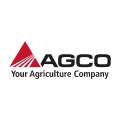



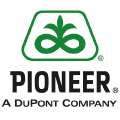


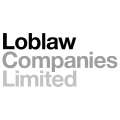







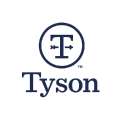
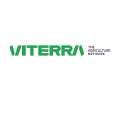

Contact Us
If you are interested in our products, services or partnering with us, please feel free to contact us by filling out this form:
or email us at sales@gaotek.com
